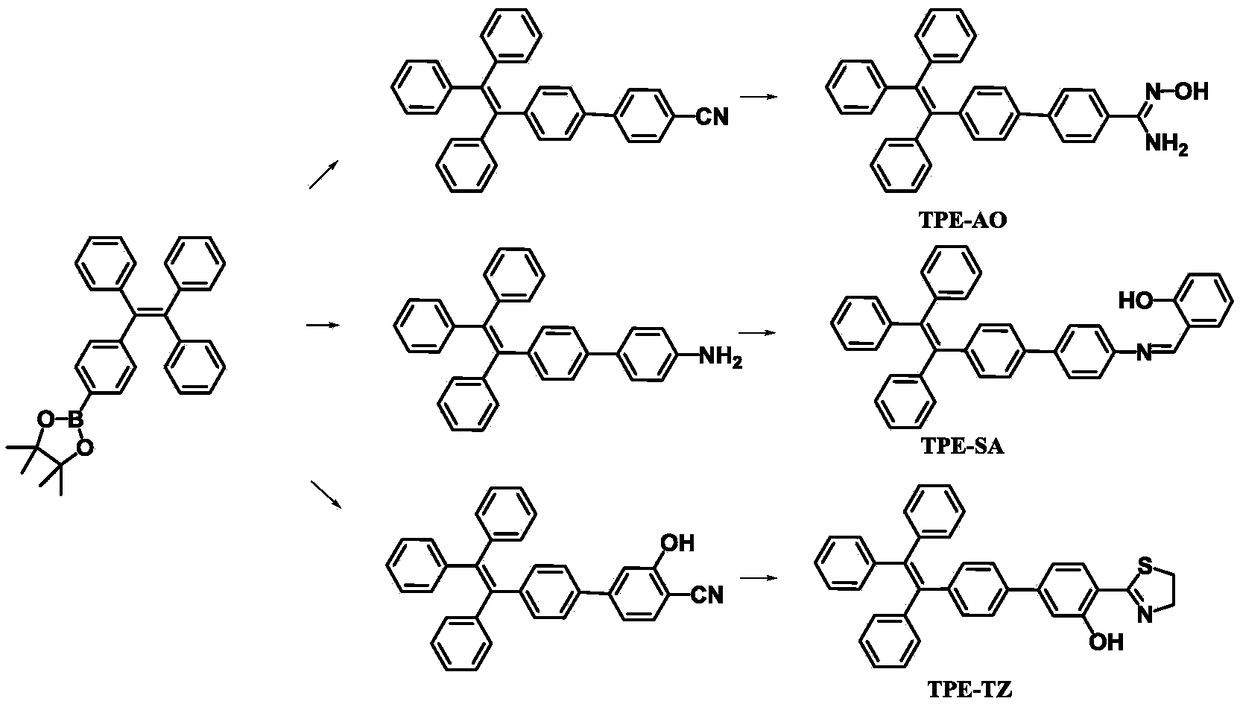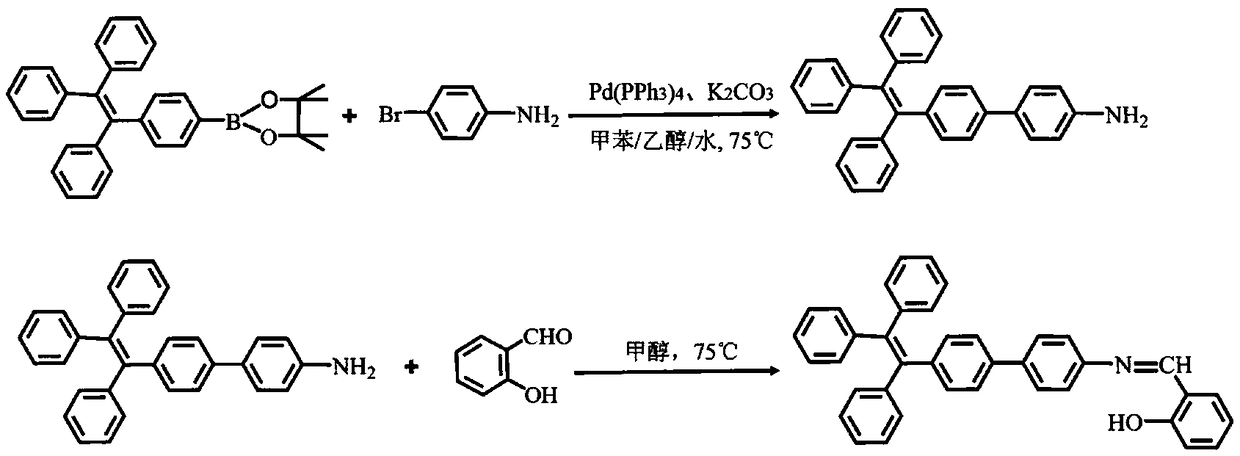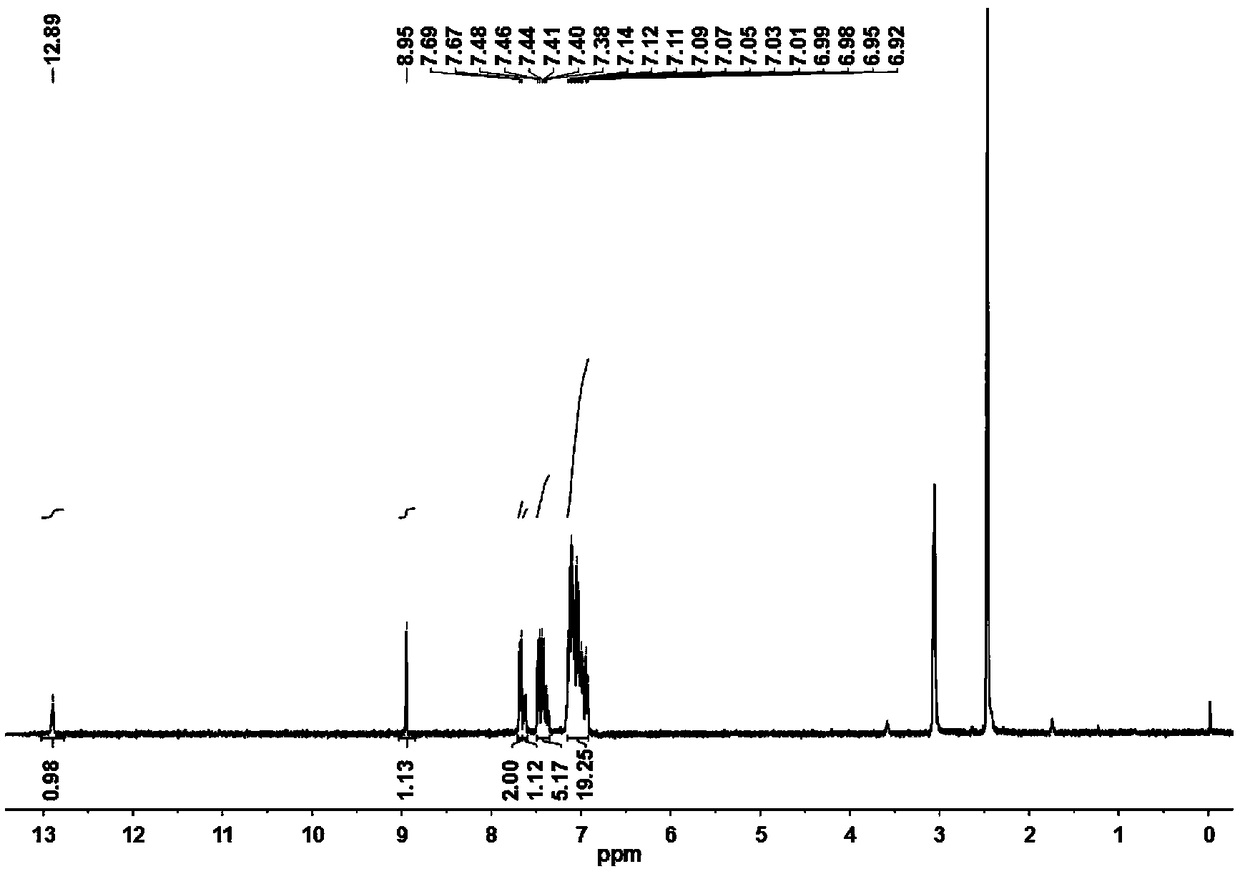Aggregation-induced emission based organic fluorescent molecules for uranyl ion detection
A technique for aggregation-induced luminescent and fluorescent molecules, which is applied in the field of organic fluorescent molecules, can solve the problems of reduced detection range, concentration quenching, and complex methods, so as to improve the detection limit and selectivity, solve concentration quenching, and expand the detection range. Effect
- Summary
- Abstract
- Description
- Claims
- Application Information
AI Technical Summary
Problems solved by technology
Method used
Image
Examples
Embodiment Construction
[0031] The present invention will be further described below with reference to the accompanying drawings and embodiments, and the mode of the present invention includes but not limited to the following embodiments.
[0032] The purpose of this embodiment is to provide an organic fluorescent molecule with excellent performance in terms of detection limit, detection range and selectivity. Since the organic fluorescent molecule in this application uses a group with aggregation-induced luminescent properties as a luminescent group, and A recognition group with strong selective recognition ability for uranyl ions, synthesized by chemical modification. The organic fluorescent molecules in this application use tetraphenylethylene as the molecular skeleton, and modify different numbers of amidoxime groups, salophen groups or thiazolephenol groups at different positions through coupling reactions. For the monosubstituted compound, it can be produced from 1-(4-phenylboronic acid pinacol...
PUM
 Login to view more
Login to view more Abstract
Description
Claims
Application Information
 Login to view more
Login to view more - R&D Engineer
- R&D Manager
- IP Professional
- Industry Leading Data Capabilities
- Powerful AI technology
- Patent DNA Extraction
Browse by: Latest US Patents, China's latest patents, Technical Efficacy Thesaurus, Application Domain, Technology Topic.
© 2024 PatSnap. All rights reserved.Legal|Privacy policy|Modern Slavery Act Transparency Statement|Sitemap



